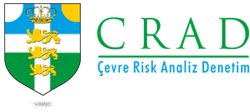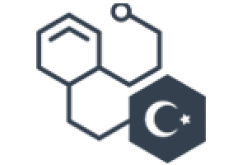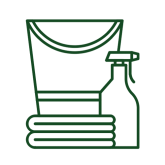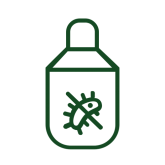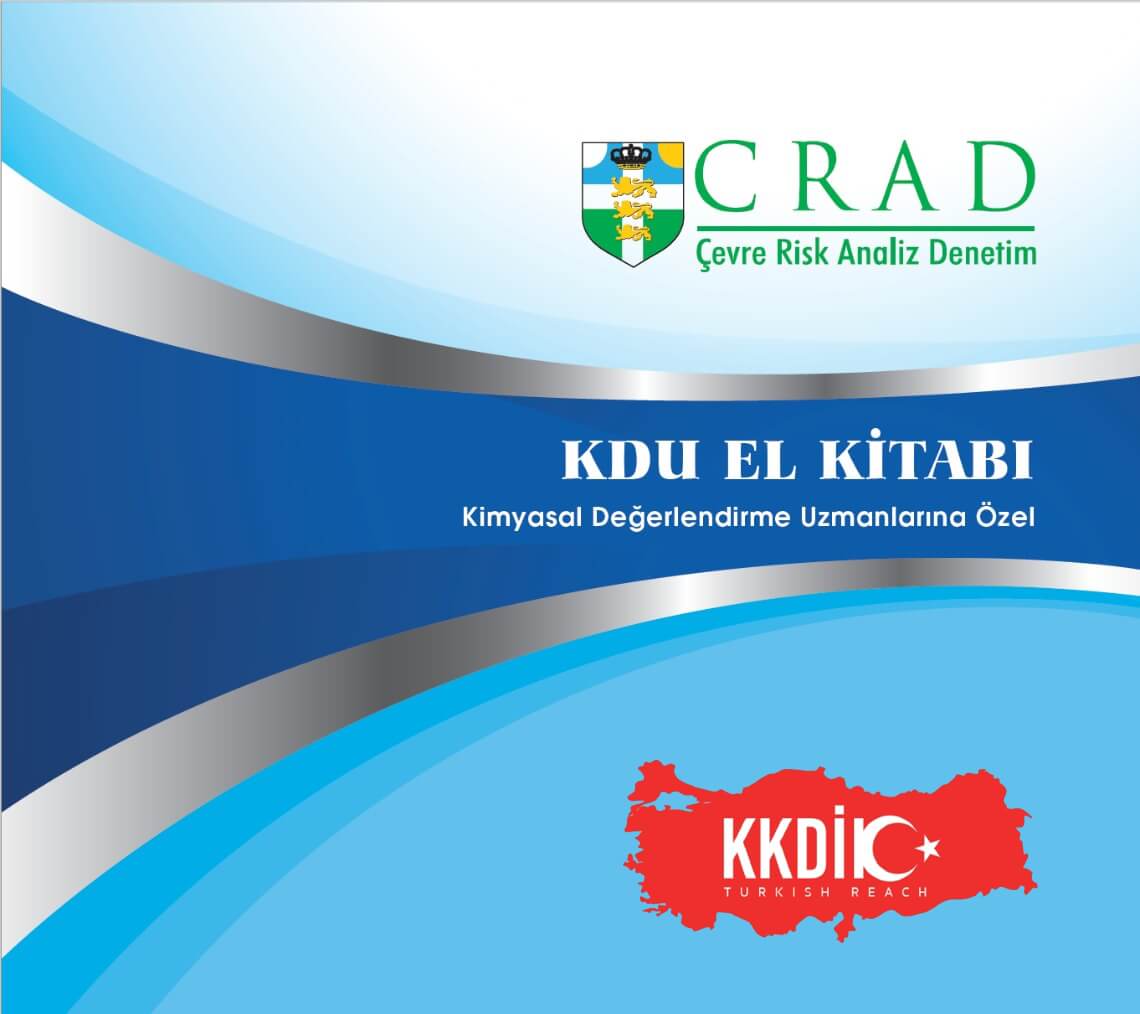THE PLACE OF SAFETY DATA SHEETS IN WORK SAFETY (SDS's)
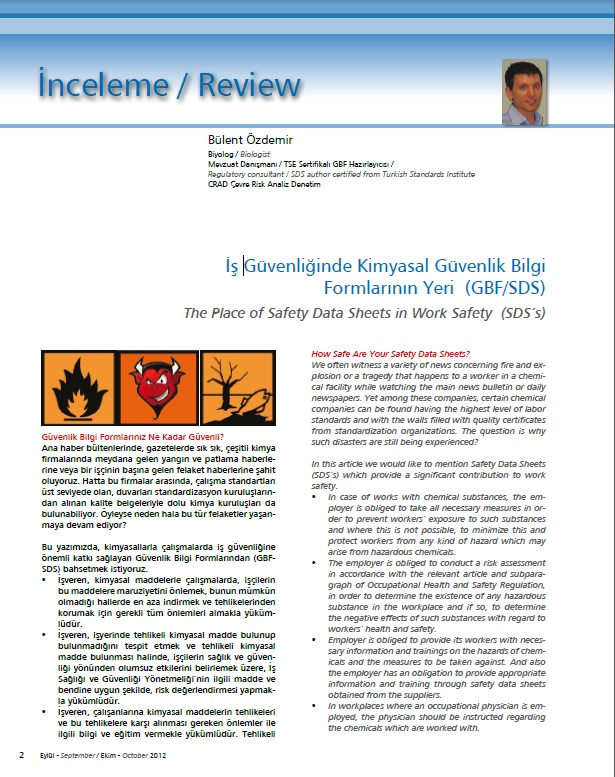 Turkchem Magazine - 2012 September- October
Turkchem Magazine - 2012 September- October
How Safe Are Your Safety Data Sheets?
We often witness a variety of news concerning fire and explosion or a tragedy that happens to a worker in a chemical facility while watching the main news bulletin or daily newspapers. Yet among these companies, certain chemical companies can be found having the highest level of labor standards and with the walls filled with quality certificates from standardization organizations. The question is why such disasters are still being experienced?
In this article we would like to mention Safety Data Sheets (SDS’s) which provide a significant contribution to work safety.
- In case of works with chemical substances, the employer is obliged to take all necessary measures in order to prevent workers' exposure to such substances and where this is not possible, to minimize this and protect workers from any kind of hazard which may arise from hazardous chemicals.
- The employer is obliged to conduct a risk assessment in accordance with the relevant article and subparagraph of Occupational Health and Safety Regulation, in order to determine the existence of any hazardous substance in the workplace and if so, to determine the negative effects of such substances with regard to workers’ health and safety.
- Employer is obliged to provide its workers with necessary information and trainings on the hazards of chemicals and the measures to be taken against. And also the employer has an obligation to provide appropriate information and training through safety data sheets obtained from the suppliers.
- In workplaces where an occupational physician is employed, the physician should be instructed regarding the chemicals which are worked with.
I would like to provide information regarding the SDSs for which the importance has been clearly stated in related regulations
The SDSs should be drawn up in Turkish and for Turkish market. It’s a regulatory provision that SDSs should be prepared by a trained and certificated staff from an accredited body. I may even express based on my personal experiences that such a certificate would not be enough solely, the SDSs may deviate from their aim on people’s hands who do not possess adequate experience and fund of knowledge for preparing such documents and these may even become dangerous documents due to certain wrong information and instructions.
An SDS consists of 16 sections.
1. IDENTIFICATION OF THE SUBSTANCE/PREPARATION AND OF THE COMPANY/UNDERTAKING
In this section, a number of information such as business name, contact details of the company which manufactures/ places the chemicals on the market, use of chemicals should take place. Additionally providing toll free numbers such as National Poison Information Centre (UZEM) would be appropriate.
2. HAZARDS IDENTIFICATION
The risks that the chemical involves can be observed in this section. The relevant calculations in this section shall be made in accordance with the criteria provided in the regulation. Such calculation needs to be made by a certificated and competent personnel. Yet, this is the key section of an SDS and the classification provided in that section determines how other sections will be populated. The relevant hazard classification have to be the same as R phrases and their clear statements which are identified in the regulation and no other words which may cause to different meanings should be used. The purpose for this section being in second range is that enables the risk arising from the chemical or the mixture can be recognized on the first page of the SDS.
3. COMPOSITION/INFORMATION ON IGREDIENTS
In section two, substances which cause various hazards and which have exposure limit values are identified with their own R phrases, EC/ CAS numbers and concentration of uses which may be indicated within a certain range. The R phrases here are also provided in section 16 accompanied with clear statements.
4. FIRST-AID MEASURES
The first aid measures to be taken and applied are indicated in cases where the chemical substance contacts with skin/ eye or is inhaled and swallowed. In addition to that, in any case where such exposures occur, information about which symptoms may rise should be provided if known. Recommendations can be given to the physician.
5. FIRE-FIGHTING MEASURES
Fire extinguishing measures and related equipment differ according to the type of chemicals. Different extinguishing methods apply to flammable and explosive chemicals, toxic and environmentally hazardous and also various materials and equipment are used pursuant to the type of the chemical. The recommendations which comply with the nature, storage yard of the chemicals and other surrounding substances, e.g. interference with high pressure water jet is not recommended for flammable materials, such an extinguishing method may cause spread of fire.
6. ACCIDENTAL RELEASE MEASURES
Recommendations on the measures to be taken during intervention and protective equipment are described with regard to personal protection. Such recommendations are to be in compliance with the classification of the chemical substance. For instance, chemicals with explosive and flammable properties are recommended to be kept away from ignition sources. The necessary measures to be taken and the negative effects on soil, water sources and sewage system which will especially arise from substances classified as hazardous for the environment shall be mentioned. Spill clean- up methods and cleaning materials are recommended. If possible, such recommendations are provided separately for both large and small spillages.
7. HANDLING AND STORAGE
The precautionary measures to be taken by the persons who are in direct contact with the chemical substance (who deal with the manufacture, handle, transport and store) shall be given. The equipment which needs to be used or not to be used is recommended. The activities which should be carried out or not are defined, e.g. an appropriate eye and skin protection and an eye-wash station can be suggested. Suitable environment for the storage, the chemicals which are not convenient for common storage and appropriate container material for the storage of the chemical substance shall be indicated.
8. EXPOSURE CONTROLS/PERSONAL PROTECTION
Recommendations are given for the workplace environment in which the chemical substance is been processed. If, determined workplace exposure limits are available, they shall be indicated in this section, and please bear in mind that determined workplace exposure limits may vary from country to country. In case of necessity, any type of protective equipment for hand, skin and respiratory protection shall be indicated while working with chemicals. Information regarding adequate ventilation system needs to be provided in order to avoid any exposure which may arise from the chemical substance, e.g. if a chemical which is classified as irritant when respired is handled, a strong exhaust ventilation and if necessary an A/P type breathing apparatus is recommended. Instructions and proceedings to be followed in the workplace can be described.
9. PHYSICAL AND CHEMICAL PROPERTIES
Physicochemical data regarding the chemical substance or the mixture if a product is subject shall be given. For instance, certain values such as flash point, boiling point have to be considered as remarkable. pH value for corrosive substances is important or the same can be suggested for viscosity value where exposure hazard increases if the relevant substance is in liquid form. Descriptive properties such as colour, odour, form under ambient temperature (liquid, powder etc.) should be indicated if there is no reasonable justification. For subheadings in which no information will be given, statements such as “not available”, “not applicable” must be added.
10. STABILITY AND REACTIVITY
Under this section, information on stability for the chemical substance has to be disclosed. Factors that might disrupt chemical stability, substances it may react with, conditions and/ or substances to avoid, hazardous decomposition products shall be mentioned if available.
11. TOXICOLOGICAL INFORMATION
If known, toxic doses with regard to the mixture shall be exhibited; in case where there is no adequate data regarding toxic data for the mixture, toxic doses related to each ingredient will be indicated taking into consideration the exposure values through oral – dermal- respiratory routes. In case of inhalation, swallowing, dermal/ skin contact, information on acute effects are provided. If such information is available, the studies recognized officially by relevant authorities shall be indicated. Some studies may not be officially recognized by the authorities even though they are not rejected at the same time. Such studies can be added and relevant information can be provided with regard to the nature of the study.
12. ECOLOGICAL INFORMATION
This section needs to be populated for substances/ products with hazardous properties to the environment or for the mixtures containing environmentally hazardous substances. Information on toxicologic effect to the environment, biodegradation, bioaccumulation properties in soil or aquatic organisms of the chemical substance shall be provided. If available, test results will be given as well. Information on chemical substance regarding its environmental behaviour in soil and water is provided. If available, ecotoxicological dose studies conducted on fish, daphnia magna, algae and related toxic doses will be listed.
13. DISPOSAL CONSIDERATIONS
Disposal methods which are suitable and not suitable for waste/ unused product and empty packaging are indicated. If possible, six-digit waste code can be determined and inserted under this section. References about the methods applied can be made to the current regulations.
14. TRANSPORT INFORMATION
Turkey has been adopted The UN International Transport Regulations. A transitional period is gradually carrying out in Turkey and all related provisions are expected to be implemented as of 2014. This section must be drawn up by experts in their subject. While making transport classification, a completely different method from the classification carried out in section two has to be kept track of. The transport label is generated through the information given under this section and transport companies come up to final conclusion how they will carry out the transport of the related chemical substance. Consequently, an incorrect classification may result additional costs with regard to transport, storage, insurance etc.
15. REGULATORY INFORMATION
This section includes the label information for the relevant chemical substance and the same information should be used on the label as well. The relevant R phrases attained following a calculation for classification and their clear statements, and also appropriate S phrases and their statements which should be used in compliance with such R phrases and finally, if available, related symbols have to be indicated. Additionally, references shall be made to the relevant regulations under this section.
16. OTHER INFORMATION
The whole R phrases and related statements which are indicated both in section 3 and 15 should be provided in this section. Additional information related to chemical substance, abbreviations and the person responsible for generating SDS shall be given under this section.
The SDSs have been made more qualified and standardized through a large number of regulations published by national and international authorities. In the EEA, GHS (The Globally Harmonized System of Classification and Labelling of Chemicals) implementations, has been came into force for substances only Through CLP Regulation and this will be implemented for substances, mixtures and for all chemical products accordingly as of 1st June 2015. As far as we presume, Turkey will be met CLP implementations in 2013 as well as the European Countries. We assume that such new classification system will pose a remarkable obstacle for the Turkish chemical industry. Yet CLP is significantly different with its new classification criteria and SDS&Labelling format. CRAD provides the industry with various solutions with regard to such issues with the support of its team consisting of experts and its strong technical infrastructure. As CRAD, we have been operated since 2009 as the distributor company of a multilingual software in Turkey which can make possible the generation of SDSs according to various regulatory requirements.
The SDSs which will be generated correctly and with highest quality will constitute a strong basis for the prevention of occupational accidents in the workplace.
REFERENCES
1) Regulation on Preparation and Distribution of Safety Data Sheets Regarding to Dangerous Substances and Preparations, dated 26 December 2008, numbered 27092 (Bis) of Ministry of Environment and Urbanization.
2) Occupational Health and Safety Act, numbered 28339
3) Regulation on the Classification, Packaging and Labelling of Dangerous Substances and Preparations, numbered 27092 (Bis).
4) Occupational Safety and Health Regulation
Bülent Özdemir
Biologist
Regulatory consultant / SDS author certified from Turkish Standards Institute
